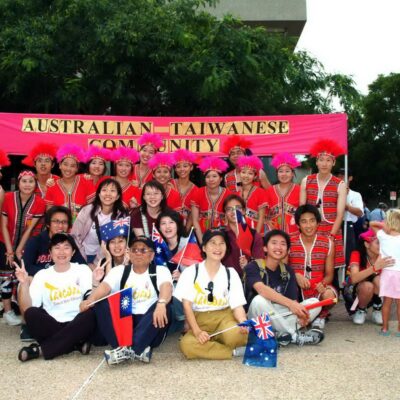The Taliban appears to be on a diplomatic front foot. It has been conducting formal meetings with regional and extra-regional players, including the United States, and appears to have gained a nod of approval to gain access to power in Kabul. The shape and extent of its power in Afghanistan is still undecided, but it seems almost certain that it has a future and peace talks with the Afghan government have recently begun.
In February, a US State Department delegation headed by its special envoy Zalmay Khalilzad met with the Taliban in Doha. An agreement was signed to cease clashes and design a roadmap for an intra-Afghan peace talks, which could potentially lead to a national coalition government.
Regional powers like India and Iran interpret the deal as a sure sign that the Taliban will have access to power in Afghanistan with Washington’s blessing. This has obvious repercussions for these governments and they feel the urgent need to take stock of their options and adjust their policies accordingly.
It is a very different picture from the end of 2001, after the Taliban’s forced ejection from Kabul by a US-led international coalition.
The Taliban’s relationship with the United States
After achieving its strategic objective of defeating the Soviets in the Afghan-Soviet War in the 1980s, the US simply left Afghanistan at the mercy of local and regional actors. Subsequently, Afghanistan was plunged into a civil war in the 1990s. During Taliban rule (1996-2001), international terrorist groups such as al-Qaeda found sanctuaries in Afghanistan to launch terrorist attacks like the September 11, 2001 attacks. The US approached the UN Security Council and its NATO and non-NATO allies, for example Pakistan, to remove the Taliban regime.
The US-led NATO engagement in Afghanistan has been the longest and most costly war for not just the US but also its allies. More than 2,400 US soldiers have lost their lives in Afghanistan and until the end of 2019 the war had cost the US economy $2 trillion. The war with the Taliban has not been easy mainly because the US failed to deal with the Taliban’s safe havens in Pakistan.
In June 2011, former US President Barack Obama announced the withdrawal of 10,000 American soldiers from Afghanistan with an additional 23,000 leaving by mid-2012. The current administration of President Donald Trump slightly reversed the policy of the Obama administration by deploying an additional 3,000 US troops in Afghanistan in 2018. The Trump administration has also enhanced efforts to reach a peace deal with the Taliban and intra-Afghan settlement.
Its current policy of withdrawing from Afghanistan also comes with apprehension that it may again lead to more chaos in Afghanistan. There are serious concerns considering the Taliban’s track record in relation to human rights, especially violence against women and Shi’as and Hazaras was widespread under the Taliban regime. The Taliban’s involvement in governing Afghanistan after the withdrawal of all international troops is problematic, but a lot will depend on the outcomes of intra-Afghan dialogues and the role of state and non-state actors, for example al-Qaeda and Islamic State.
The deal with the US gives confidence to the Taliban to expand its external relationships to gain legitimacy and put pressure on the Afghan government. A noticeable change in the Taliban’s external engagement can be seen in its links with Pakistan and also with its erstwhile adversaries, especially Iran and Russia, and its contact with China.
The Taliban’s external relations have implications for the future of peace in Afghanistan
As the Taliban has gained more territory in Afghanistan, its influence has been recognised by external actors interested in peace diplomacy and intra-Afghan dialogues. According to an estimate, 34 percent of the Afghanistan territory is under the control of the Afghan government, 19 percent under the Taliban, and 47 percent is contested. This has largely been possible because of support from Pakistan in the past decade, which enabled the Taliban to have sanctuaries in Pakistan and re-organise their forces. At the same time, the Taliban were never added to the US State Department’s list of foreign terrorist organisations. While this would not have affected the Taliban’s relationship with states like Iran, the US troops’ drawdown and ultimate withdrawal from Afghanistan has provided opportunities for regional powers such as Iran, Pakistan, China and Russia to expand their influence in Afghanistan. There is, however, little known about how the Taliban has engaged with them.
Pakistan
Pakistan has long-standing and complex relations with the Taliban. Once the mainstay of the Taliban, in the aftermath of the 9/11 terrorist attacks Pakistan joined the US ‘War on Terror’, a U-turn from its previous position on the Taliban. While Pakistan did re-establish links with the Taliban in subsequent years, until recently, many of their dealings were covert.
In 2015, Pakistan’s foreign office invited a Taliban delegation to intra-Afghan dialogues in Murree. In 2019, Mullah Baradar—the Taliban’s deputy leader and the head of the Taliban’s office in Doha, who had been imprisoned in Pakistan for years—was invited to Pakistan to support peace talks with the US. This Taliban visit to Islamabad was symbolic because both the Taliban and Pakistan used the opportunity to highlight the extent of their relationship.
Pakistan’s foreign office also hosted a Taliban delegation early in 2020 in support of the US-led peace process. Pakistan is clearly keen to remain relevant and instrumental to the future direction of Afghanistan, with Pakistani Foreign Minister Shah Mehmood Qureshi saying: “Pakistan is trying to help restart the dialogue process [between the US and the Taliban] to bring it to its logical conclusion.”
Russia and Iran
Before 2001, Russia and Iran supported the National United Front, also known as the Northern Alliance, against the Taliban. Despite this, in recent years the Taliban has initiated engagement with Russia and Iran. The Taliban has proven itself a capable force against the Islamic State-Khorasan Province (the Islamic State’s Central Asian province known as IS-K), whose emergence is of concern to both Iran and Russia. Furthermore, Russia (along with Pakistan and China) has supported to the removal of several Taliban leaders from the UN sanctions list.
Two months after US talks with the Taliban in December 2018, Tehran confirmed that a Taliban delegation had visited Iran for talks with Iranian officials on developments in Afghanistan. Reportedly, Iran has supported some Taliban groups with money and weapons in the western part of Afghanistan against IS-K. Afghan intelligence officials also claimed that on many occasions, Russia was also supporting Taliban commanders in the north of the country to fight against the US and Afghan troops.
Interaction between Iran and the Taliban is complex. Given that Iran had supported anti-Taliban forces in the past, there is a clear shift. Tehran, however, is cautious because of the Taliban’s anti-Shi’a stance, as reflected in the remarks by the Iranian foreign minister, Mohammad Javad Zarif, that “the Taliban should not have a dominant role in Afghanistan.”
Despite its official statements supporting the current Afghan government and calling for only a limited role for the Taliban in Afghanistan’s future, it has been reported that Iran provides military support to some Taliban factions and might have tried to engage with some breakaway factions that might not be happy with the peace deal with the US. If this is the case, Iran may be seeking to retain connections with some parts of the Taliban if they are in government in the future.
Russia has not always supported the Taliban, but may be doing so currently in Afghanistan’s north. In 2015, Russian Ambassador to Afghanistan, Zamir Kabulov, reportedly confirmed that Russian officials had met a Taliban representative in Russia’s military air base in Tajikistan in December of that year. In November 2018, Russia invited a Taliban delegation to Moscow to attend a conference with other Afghan politicians and representatives from the US, India, Iran, China, Pakistan, Kazakhstan, Kyrgyzstan, Tajikistan, Turkmenistan and Uzbekistan. This was a noticeable change in the Taliban’s engagement with Russia, given the Taliban had not participated in the 2017 conference hosted by Moscow. The 2018 conference provided a stage for the Taliban to gain legitimacy and, to a great extent, their new engagement with Russia and other regional actors has also played a significant role. The Moscow conference also demonstrated that the Taliban were not there for a peace deal with the Afghan government; in fact at this forum, they refused Moscow’s proposal for a three-month ceasefire.
In May 2019, Russia invited the Taliban and Afghan politicians to another round of the Moscow conference. This time, Afghan politicians proposed a ceasefire deal, but this was again was refused by the Taliban which demanded US withdrawal as a precondition for a ceasefire. (However, at the time of signing the peace deal with the US earlier this year, the Taliban’s position on a ceasefire had changed: the Taliban secured the exchange of 5,000 Taliban prisoners for 1,000 government prisoners as a condition for intra-Afghan negotiations and ceasefire.
China
Engagement with China is critical for the Taliban to enhance its diplomatic reach in the region. The Taliban has increased its contact with China, with a Taliban delegation visiting China at least twice, in June and September 2019. The Afghan government has sought China’s support to encourage the Taliban and Pakistan to engage in peace talks, but China’s efforts for peace and intra-Afghan talks have failed to achieve substantive results.
No signs of war fatigue
The Taliban has used international conferences, such as the one in Moscow, and visits to Iran and China, as opportunities to question the legitimacy of the Afghan government, insist on the withdrawal of the United States, and establish relations with countries in the region. The Taliban’s behavior has been strategic and it persists in its objectives of controlling more territories and in undermining the Afghan government. In its interactions with regional countries, the Taliban has consistently assured them that there would be friendly relations in the future.
However, the Taliban’s inflexibility within Afghanistan over sharing power with other groups is a source of concern for regional actors. Also, the group’s strict interpretation of Shari’a law may inspire other extremist groups in the neighborhood—something that is a matter of great concern for both China and Russia.
By gaining more territory and influence within Afghanistan, the Taliban has demonstrated a newfound confidence, evident in its external engagements. To push the US out of Afghanistan, the Taliban has exhibited a readiness to form relations with erstwhile adversaries, such as Iran and Russia, and has built on relations with Pakistan for linkages with China. The Taliban’s willingness to undertake these overtures is designed to enhance its credibility internationally and expand opportunities beyond its traditional links with Pakistan.
Authors: Zahid Shahab Ahmed, Abbas Farasoo and Shahram Akbarzadeh. The authors are investigators on the Carnegie Corporation of New York-funded project on ‘Assessing the impact of external actors in the Syria and Afghan proxy wars’ (Grant number: G-18-55949) at Deakin University, Australia.
Image: Kabul and surrounding areas. Credit: Shutterstock/Wandel Guides




